
When contacting us by e-mail, correspondents are asked to include their name and full postal address and, when providing information, to quote exact book and magazine sources. The word ‘chess’ needs to appear in the subject-line or in the message itself.
| First column | << previous | Archives [30] | next >> | Current column |
We are grateful to Michael Clapham (Ipswich, England) for permission to reproduce four photographs from his collection:

Emanuel Lasker in the Netherlands,
January or February 1920
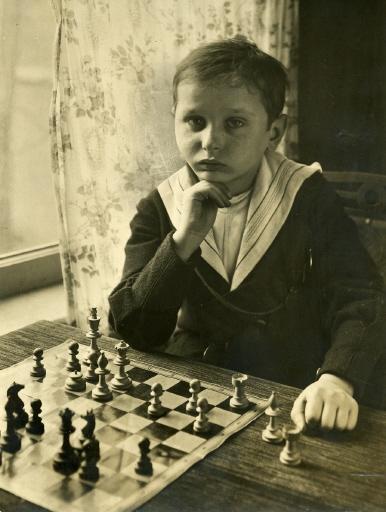
Samuel Reshevsky in the Netherlands, February or March 1920
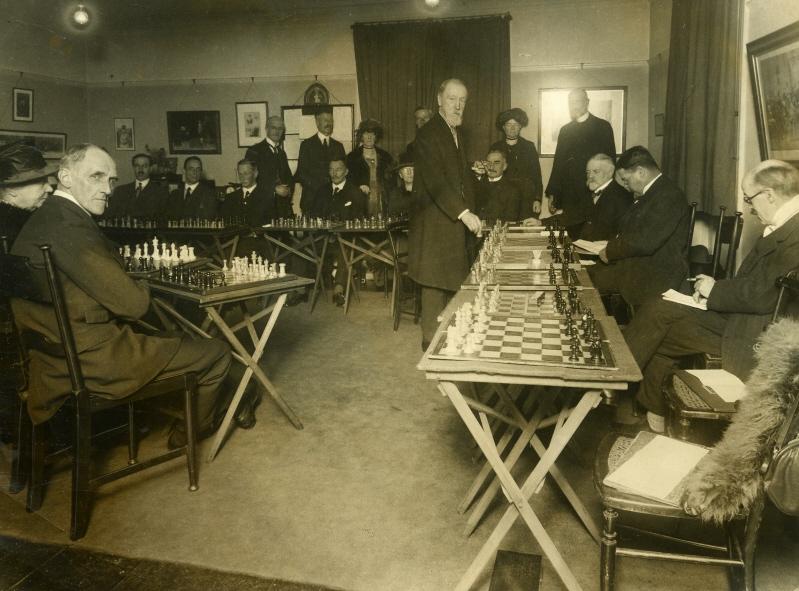
Joseph Henry Blackburne
Our correspondent mentions that the above picture was taken at the Imperial Chess Club in London. Below is the report of the occasion from page 25 of the January 1922 BCM:
‘There was an excellent attendance at the Imperial Chess Club, on Saturday, 17 December, to see our octogenarian “G.O.M.” play 20 games simultaneously against the members of the club. After five hours’ play the veteran had won nine, lost one to Mrs Banting, and ten games were drawn. His cheery remarks and audible asides were as amusing as ever. It was a wonderful performance for a man over fourscore years.’
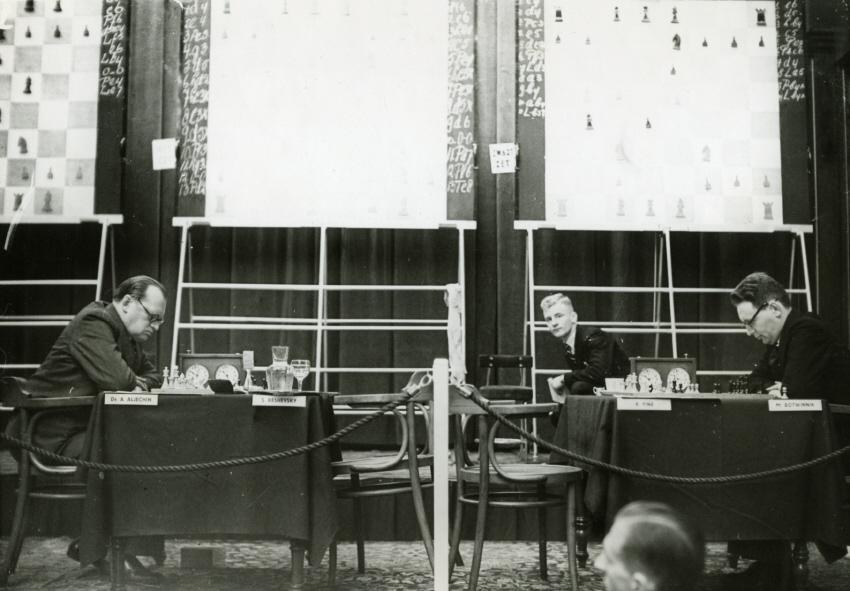
Alexander Alekhine and Mikhail
Botvinnik, AVRO, Amsterdam, 6 November 1938
A number of databases give the following as a correspondence game played by J. Lansing and R. Hart in 1985:
1 e4 e5 2 f4 exf4 3 Nf3 g5 4 Bc4 d6 5 O-O Bg4 6 h3 h5 7 hxg4 hxg4 8 Ne1 g3 9 Rf3 Nd7 10 d4 Ngf6 11 Nc3 Ng4 12 Bxf4 Nf2
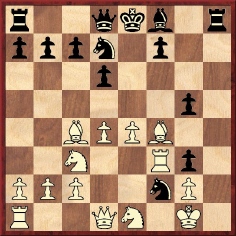
13 Bxg3 Nxd1 14 Bxf7+ Ke7 15 Nd5 mate.
In reality, the game had been published on page 24 of the November 1907 issue of Lasker’s Chess Magazine:
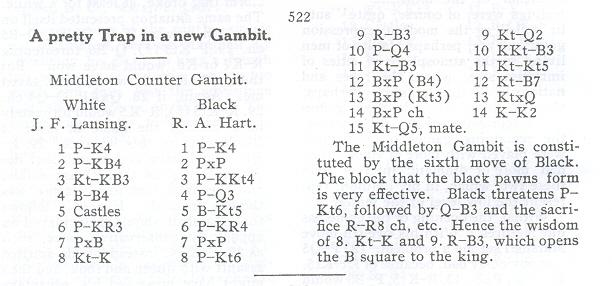
Luc Winants (Boirs, Belgium) asks for information about C. Wreford Brown, who represented Great Britain in the Paris Olympiad of 1924.
There was a grabbed-off-the-trottoir look to a number of national teams in the Olympiad, and none more so than Great Britain, which was represented by Wreford Brown, H.K. Handasyde and Edith Holloway (BCM, August 1924, page 316). Originally, J.H. Blake and Edith Holloway had been announced (La Stratégie, June 1924, page 143). Eleven of Wreford Brown’s games were given in Primera olimpíada de ajedrez (Martínez, 1973).
Results later in his life included, as reported on page 384 of the September 1932 BCM, second place in that year’s Major Open Reserves Tournament in the BCF Congress in London. The following year he was selected to play in the British Championship in Hastings but, having scored 1½/2, he withdrew owing to ill-health (BCM, September 1933, page 366).
Wreford Brown studied at Oriel College, Oxford, and on page 305 of A Century of British Chess (London, 1934) P.W. Sergeant remarked that ‘in his Oriel days [he] devoted himself not to chess but to the game at which he became so famous, Association football’. From various Internet pages it may be seen that Charles Wreford Brown (1866-1951) is attributed invention of the word soccer (as an abbreviation of association). We note that the Oxford English Dictionary does not mention him but has citations for socca’ (1889), socker (1891) and soccer (1895).
A relatively late appearance of Wreford Brown’s name in the chess press came after an article by George Koltanowski (‘Chess in Guatemala’) on pages 290-293 of the July 1939 BCM had included this position (White to move):
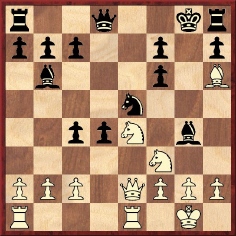
Wreford Brown reacted as follows in the September 1939 BCM, page 405:
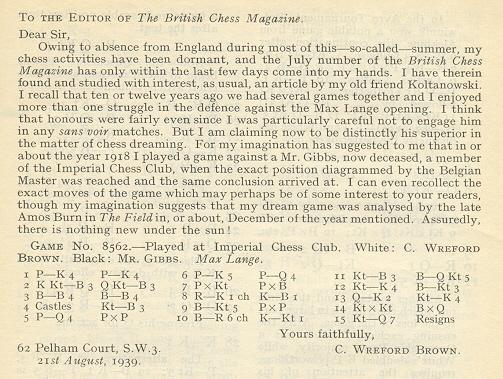
The game is by no means unknown. Irving Chernev included it on page 134 of 1000 Best Short Games of Chess (New York, 1955) but named White only as ‘Brown’ and had a different order for the opening moves. The game also appears in databases, sometimes misascribed to Fred Brown. Wreford Brown was correctly identified as the victor on pages 67-68 of the December 1918 Chess Amateur and on page 8 of Chess More Miniature Games by J. du Mont (London, 1953). For reference, the moves as given by Wreford Brown are repeated here: 1 e4 e5 2 Nf3 Nc6 3 Bc4 Bc5 4 O-O Nf6 5 d4 exd4 6 e5 d5 7 exf6 dxc4 8 Re1+ Kf8 9 Bg5 gxf6 10 Bh6+ Kg8 11 Nc3 Bg4 12 Ne4 Bb6 13 Qe2 Ne5 (reaching the position in the diagram above) 14 Nxe5 Bxe2 15 Nd7 Resigns.
Quite a few photographs exist of Alekhine in feline company, but Jan Kalendovský (Brno, Czech Republic) submits a rare one:
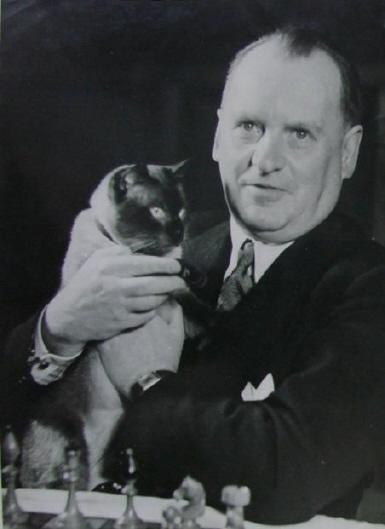
To the small number of Kramnik books Yakov Zusmanovich (Pleasanton, CA, USA) adds a recent one, Zapiski sekundanta by Yevgeny Bareev and Ilya Levitov (Moscow, 2006). It contains all the games of Kramnik’s matches against Kasparov (2000) and Leko (2004), as well as extensive biographical information about him.
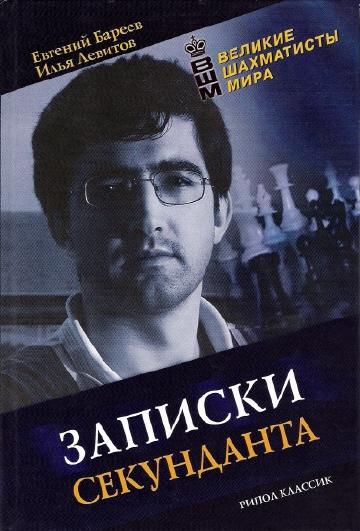
C.N. 3620 gave this photograph of Jacob Bernstein (left) and Oscar Chajes, which was the frontispiece of the Carlsbad, 1923 tournament book:
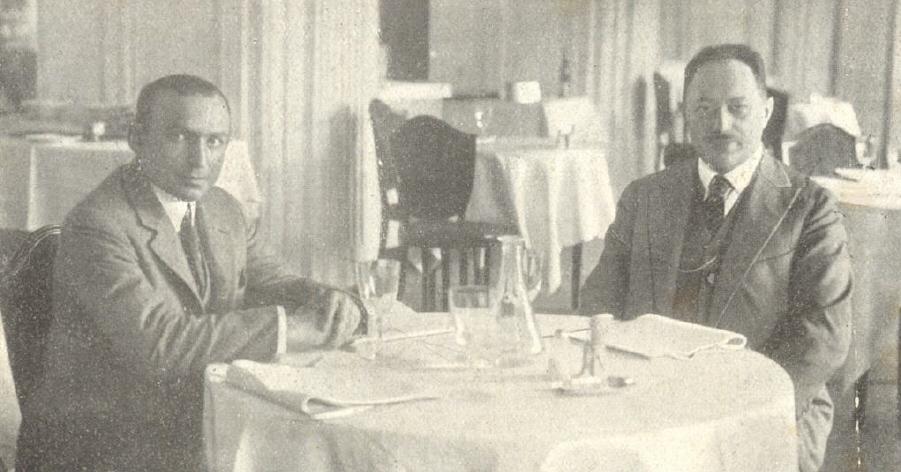
In a number of places (not only on the Internet but also, for instance, on page 23 of the San Sebastián, 1911 tournament book mentioned in C.N. 4741) the left-hand part of the photograph is used as an illustration of Ossip Bernstein.
The Factfinder has numerous references under ‘Chess authors’ books on non-chess subjects’, and an addition now is Brad Darrach, the author of Bobby Fischer vs. the Rest of the World (New York, 1974), as well as a number of articles about Fischer in the US press. One example is shown below.

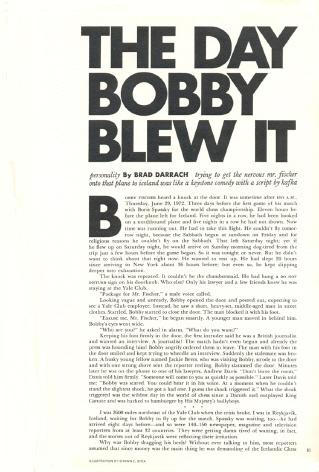
Pages 80-81 of Playboy, July 1973
Darrach, who died about a decade ago, also wrote on music, and his output included monographs about Beethoven and Verdi:

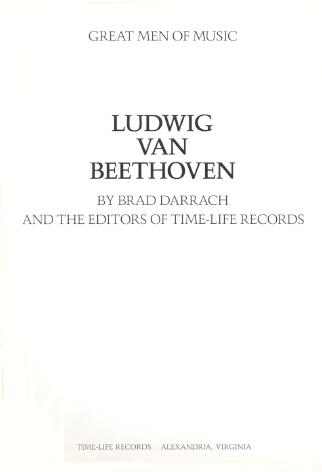
Dale Brandreth (Yorklyn, DE, USA) asks for biographical information about M. Billecard, who participated in Ostend, 1907. Jeremy Gaige’s Chess Personalia tentatively suggests that he was born in 1876, but what else is known?
In the above-mentioned tournament he scored victories over, among others, Mieses, Teichmann, Blackburne and Swiderski. Page 260 of La Stratégie, 24 July 1907 stated that he lived in Algeria and had few opportunities for serious play (‘un amateur français qui, résidant en Algérie, n’a que trop rarement l’occasion de faire quelques parties sérieuses’).
In the context of our Chess Records article we seek more information about George Koltanowski’s column in the San Francisco Chronicle. The newspaper’s obituary on 7 February 2000, by Steve Rubenstein, reported that Koltanowski ‘wrote more than 19,000 chess columns for the San Francisco Chronicle’ and that ‘his column, which appeared in the Chronicle every day without interruption for 52 years, was the longest-running daily chess column in history’.
What were the exact dates of Koltanowski’s first and last columns in the Chronicle?
‘International chess master Andrew Martin (UK) played against 321 different opponents at Wellington College, Berkshire, UK, on 21 February 2004. Martin won 294 games, drew 26 and lost only one. The attempt took 16 hr 51 min.’
Who was the tail-ender at Munich, 1900? Page 14 of the tournament book named him as ‘Fr. G. Jacob aus Straßburg i. E.’, although elsewhere in the book the spelling was ‘Jakob’. We are, above all, intrigued by the reference on page 243 of La Stratégie, 15 August 1900 to ‘M. Jacob, pseudonyme d’un amateur de Strasbourg’.
A comment by B.H. Wood on page 19 of CHESS, November 1944:
‘Najdorf is a born chess genius and, with a little of the self-discipline which he so strikingly lacks, capable of winning any world championship. At lightning chess he scintillates; we once saw him beat Tartakower (who is quite a doughty exponent of this game himself) 14 times in succession at “five-minute” play. This could not be a normal result, but it illustrates the extraordinary swing of his temperament.’
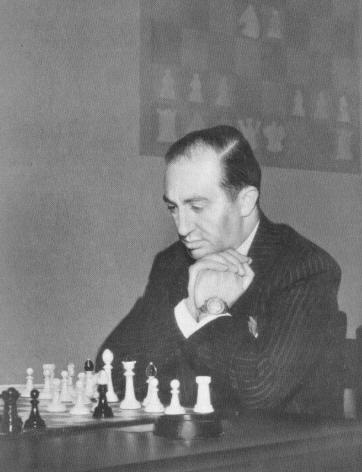
M. Najdorf
Joost van Winsen (Silvolde, the Netherlands) raises the subject of games played by Ernesto Che Guevara (1928-67). Over the years our correspondent has collected a number of game-scores, mainly from Cuban webpages which are no longer available and which did not necessarily offer a reliable source. In the list below, only the first few moves are presented, for identification purposes, since we do not wish to give currency to any games which may be spurious.
1) Rogelio Ortega (simultaneous) – Ernesto Che Guevara
Havana, 1960 or 1961
Queen’s Pawn Game1 Nf3 d5 2 e3 e6 3 d4 Nf6 4 Bd3 g6 5 O-O Bg7 6 b3 O-O. Black won at move 22.
2) Miroslav Filip (simultaneous) – Ernesto Che Guevara
Havana, 1962
Queen’s Gambit Declined1 Nf3 d5 2 c4 c6 3 d4 Nf6 4 Nc3 g6 5 Bf4 Bg7 6 e3 Bf5. Drawn at move 26.
3) Miguel Najdorf (simultaneous) – Ernesto Che Guevara
Havana, 1962
Ruy López1 e4 e5 2 Nf3 Nc6 3 Bb5 a6 4 Ba4 Nf6 5 O-O Be7 6 Re1 b5. Drawn at move 16.
4) Armando Acevedo (simultaneous) – Ernesto Che Guevara
Camagüey, 29 May 1964
Ruy López
1 e4 e5 2 Nf3 Nc6 3 Bb5 a6 4 Bxc6 dxc6 5 O-O Bd6 6 d4 exd4. Black won at move 18.
The full game-score is available on-line, provided by Armando Acevedo.
Mr van Winsen also mentions that Che Guevara played against Korchnoi in 1963, as referred to in the ‘Open Chess Diary’ of Tim Krabbé.
Further information about Che Guevara may be found on pages 103-104 of The King by J.H. Donner (Alkmaar, 1997). What firm facts can be added regarding his involvement in chess? Or, to pose the question more provocatively, what justification exists for his becoming, posthumously, a ‘Grand Knight of FIDE’? (See our Chess Awards feature article.)
Chess photographs of Che Guevara are by no means scarce. For example, the following appeared on page 43 of the Cuban book on the Havana Olympiad, Cuba/66 XVII olimpíada mundial de ajedrez:
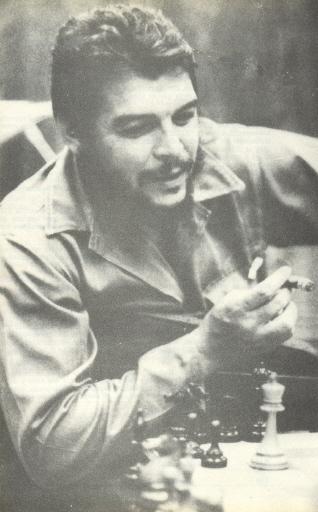
Below, moreover, are the front covers of two Cuban chess
magazines:
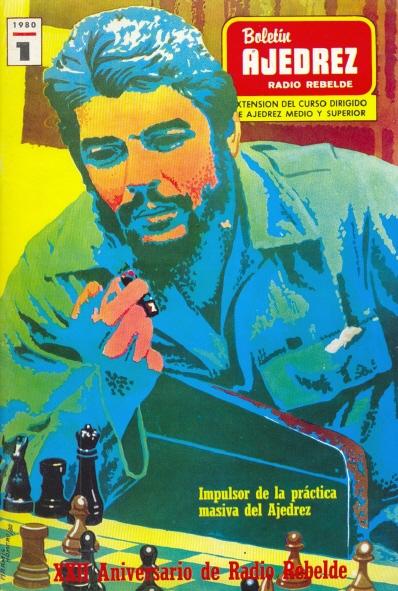
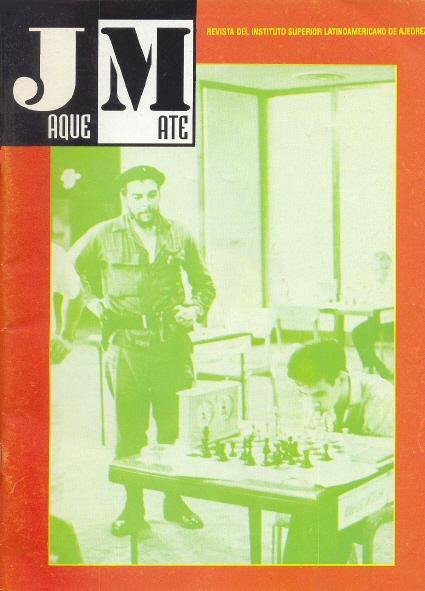
1/1980 Boletín Ajedrez and 1/1994 Jaque Mate. A note on page 1 of the latter reads ‘1964, el Comandante Ernesto Che Guevara observa la partida [de] ... Silvino García’.
A further piece of contradictory evidence about S. Lipschütz’s forename (possibly Samuel, Simon or Solomon) comes on page 2 of the monograph about him brought out by the Chess Player in 2000. It gives the following translation from page 108 of the Hungarian publication Kárpáti Kalendárium, 1980:
‘We’ve learned just lately from the register of births that Samuel, the son of Mr Lipschütz, a tradesman living in poor circumstances, and their fifth child, was born in 1863 [4 July]. Little Samuel’s chess talent attracted attention in his early childhood, but the hard struggle to earn a living prevented him from improving his play. He became a printer’s apprentice at the age of 14 and made every effort to become a pressman. However, after a little while he left the printer’s shop and emigrated to the UK and later to the USA.’
The Chess Player monograph is entitled Samuel Lipschütz.
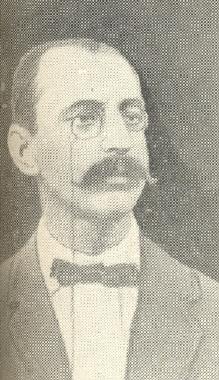
S. Lipschütz
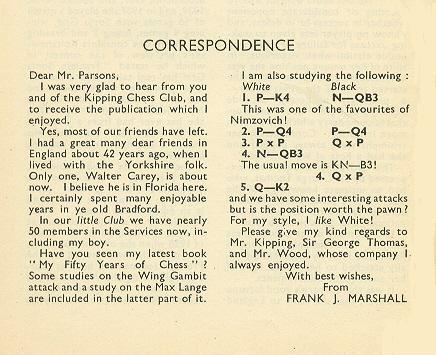
This letter to A.E. Parsons, the Club Secretary, was published on page 6 of The Kipping Chess Club Year Book 1943-1944 (Liverpool, 1944). The communication is undated, but the Year Book was published only a month or so before Marshall’s death (CHESS, October 1944, page 1).
Concerning world champions’ knowledge of chess history Avital Pilpel (Haifa, Israel) notes the passages in Chess Facts and Fables regarding Kasparov (pages 237-241) and Lasker (pages 248-249) and draws attention to Capablanca’s remarks on pages 15-16 of Last Lectures (New York, 1966):
‘A great deal has been said and written about the origin and history of chess. An excellent work on this subject is that of the Englishman H.J.R. Murray, published by the Oxford Press in 1913. This writer claims that the type of chess we play originated in India relatively recently (about A.D. 700) and that it is derived from an earlier game. This work, entitled A History of Chess, contains many interesting facts and can be recommended to all who are interested in learning more about the fascinating history of the game of chess.
Mr Murray’s conclusions seem to me of rather doubtful value. Shortly before the beginning of the present war, for example, the New York Times published an item telling about excavations in Mesopotamia during the course of which there had been found objects proving that chess had existed at least as far back as 4000 B.C. It seems likely that chess, or a similar game, has been played for so long a time that to fix its origin and antiquity is impossible.
In 1937 a lavishly illustrated book was published in New York which dealt with the origin and history of famous collections of chessmen of all epochs. This volume contains many interesting facts; and yet, who can say how many sets have disappeared which were older than the oldest sets mentioned in this work? My own experience is enough to demonstrate with what ease one loses chess sets.’
A footnote on page 16 of Last Lectures identified the New York book as ‘A History of Chessmen by Donald M. Liddell and G.A. Pfeiffer’, but for the correct details see the title-page below:
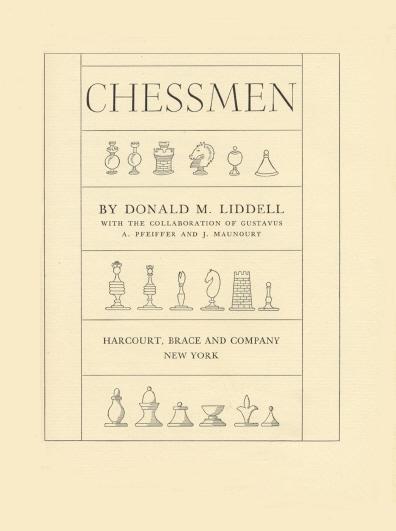
Is a reader able to hunt out the New York Times report referred to by Capablanca?
Page 200 of Chess Facts and Fables quoted some opinions on Murray’s A History of Chess which ranged from ‘practically unreadable’ (W.R. Hartston) to ‘so fascinating it is difficult to put it down’ (E.J. Clarke). The latter view may seem eccentric but is in accord with a comment by CHESS on, for instance, the back cover of its June 1944 issue:
‘A colossal work, accepted as authoritative and exhaustive – yet it grips like an adventure story.’
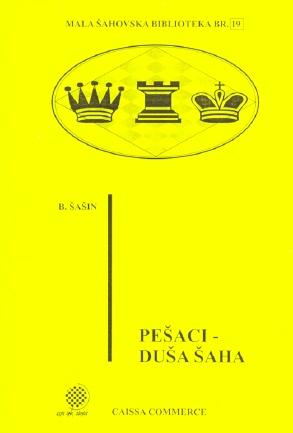
Pešaci – duša šaha by B. Šašin (Belgrade, 1999) is a 94-page book which includes such games as ‘Filidor – Konvej’, ‘Žan-Žak Ruso – Konde’, ‘Makdonel – Laburdone’, ‘Andersen – Difren’, ‘Morfi – Lihtengajn’ and ‘Aljehin – Ejc’ (‘Hestings 1925/26’).
The above have been picked at random. Pešaci – duša šaha by B. Šašin has countless instances of such rubbiš.
Which of the Steiner brothers, Endre (also known as Andreas) or Lajos, was a participant in Meran, 1924? The crosstable on page 63 of the March 1924 La Stratégie was obviously wrong with ‘Steiner, S.’. The BCM (March 1924, page 89 and April 1924, page 129) had ‘A. Steiner’, and this was followed by Jeremy Gaige on page 631 of volume four of Chess Tournament Crosstables (Philadelphia, 1974). Now, however, Luca D’Ambrosio (Bolzano, Italy) points out that various other contemporary sources (including Het Schaakleven, 15 March 1924, pages 9-10, and Deutsches Wochenschach 30 June 1924, page 125) indicate that the player at Meran, 1924 was Lajos Steiner.
So we turn to the photographic evidence. The Meran, 1924 group photograph was given in C.Ns 4635 and 4669 and is reproduced once again below, with the player named Steiner highlighted:
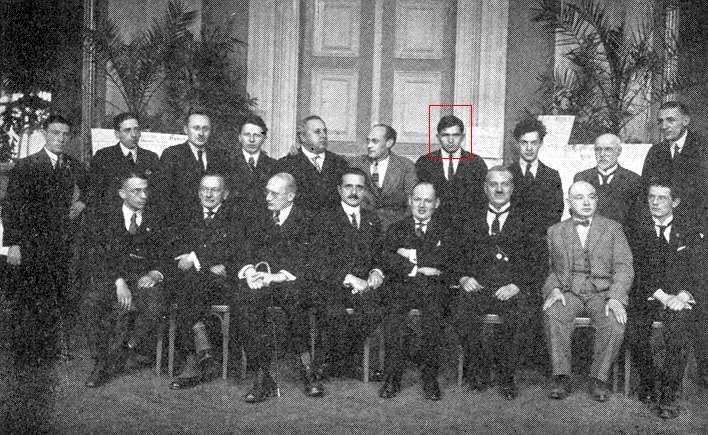
A comparison may be made with the group photograph of Győr, 1924 (from the tournament book by Maróczy), in which both brothers appeared:
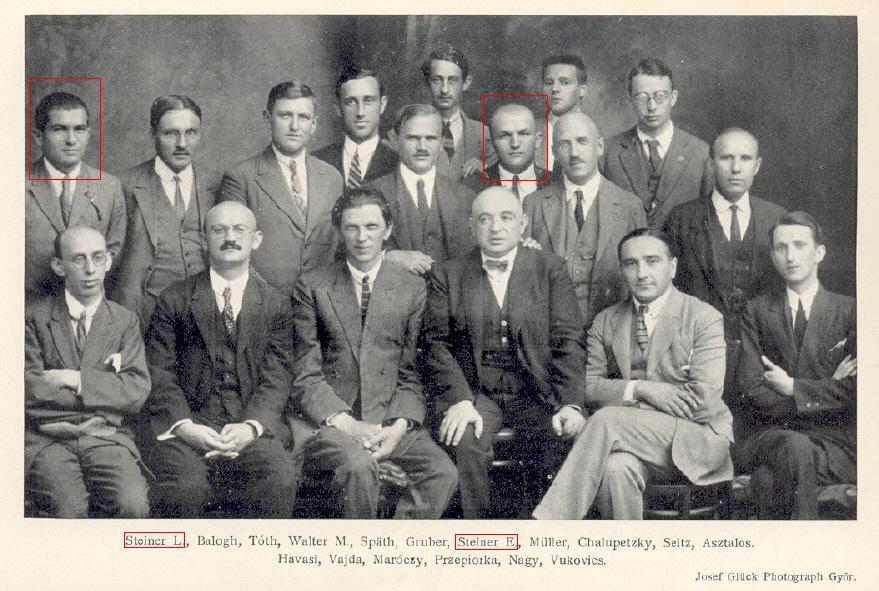
It would seem clear from this evidence that the player in the Meran, 1924 group photograph was Lajos Steiner.
Anthony Stebbings (London) mentions that Che Guevara appeared on the front cover of the June 1962 CHESS:
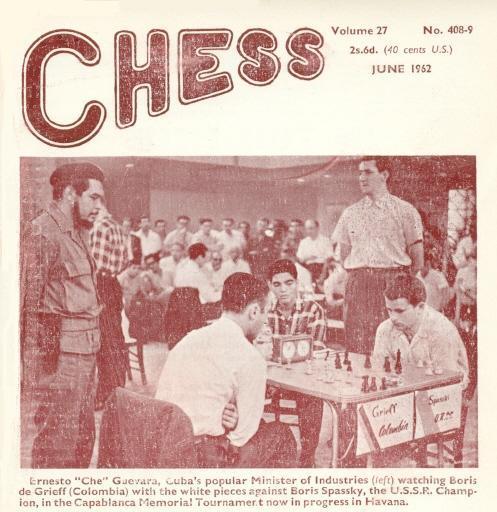
The caption reads:
‘Ernesto “Che” Guevara, Cuba’s popular Minister of Industries (left) watching Boris de Grieff [sic – de Greiff] (Colombia) with the white pieces against Boris Spassky, the USSR Champion, in the Capablanca Memorial Tournament now in progress in Havana.’
As pointed out by Calle Erlandsson (Lund, Sweden), four games by Che Guevara were published on pages 309-311 of the 10-11/1967 number of the Cuban magazine Jaque Mate (an issue dedicated to him). Three of them were mentioned in C.N. 4803, and we now give the full scores:
Rogelio Ortega (simultaneous) – Ernesto Che Guevara
Havana (date?)
Queen’s Pawn Game
1 Nf3 d5 2 e3 e6 3 d4 Nf6 4 Bd3 g6 5 O-O Bg7 6 b3 O-O 7 Bb2 b6 8 Nbd2 Na6 9 Ba3 c5 10 Ne5 Qc7 11 Rc1 Nd7 12 f4 Nb4 13 Bxb4 cxb4 14 e4 Qc3 15 Ndf3 dxe4 16 Bxe4 Qe3+ 17 Kh1 Qxe4 18 Ng5 Qd5 19 c4 bxc3 20 Rxc3 Bb7 21 Ngf3 Rac8 22 Rd3 Ba6 23 White resigns.
Miroslav Filip (simultaneous) – Ernesto Che Guevara
Havana, 1962
Queen’s Gambit Declined
1 Nf3 d5 2 c4 c6 3 d4 Nf6 4 Nc3 g6 5 Bf4 Bg7 6 e3 Bf5 7 Qb3 b6 8 Be2 O-O 9 O-O Ne4 10 Rfe1 Nxc3 11 bxc3 e6 12 h3 Nd7 13 cxd5 exd5 14 c4 dxc4 15 Bxc4 Nf6 16 Be5 Be4 17 Nd2 Bd5 18 Bxd5 Qxd5 19 Qxd5 Nxd5 20 Bxg7 Kxg7 21 Rec1 Rac8 22 Rab1 f5 23 Nf3 c5 24 dxc5 Rxc5 25 Rxc5 bxc5 26 Rc1 Rc8 Drawn.
Miguel Najdorf (simultaneous) – Ernesto Che Guevara
Havana, 1962
Ruy López
1 e4 e5 2 Nf3 Nc6 3 Bb5 a6 4 Ba4 Nf6 5 O-O Be7 6 Re1 b5 7 Bb3 d6 8 c3 O-O 9 h3 h6 10 d4 Re8 11 Nbd2 Bf8 12 d5 Ne7 13 c4 bxc4 14 Nxc4 c6 15 dxc6 Nxc6 16 Be3 Be6 Drawn.
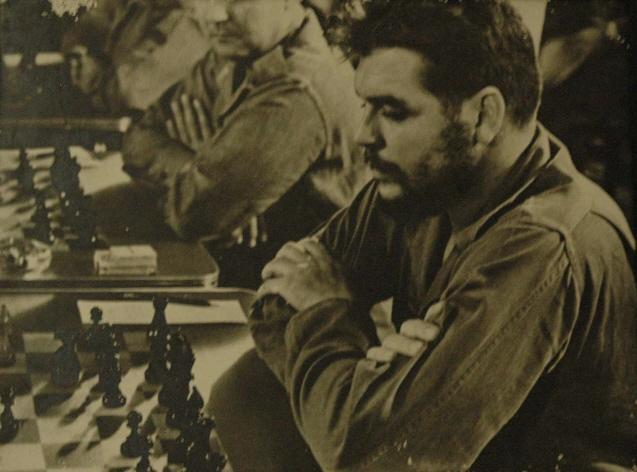
Ernesto Che Guevara (Courtesy of Calle Erlandsson)
A further game from the Cuban magazine:
Ernesto Che Guevara – J.M. Alonso1 e4 c5 2 Nc3 d6 3 g3 Nf6 4 Bg2 Nbd7 5 Nge2 e5 6 O-O Be7 7 d3 O-O 8 f4 a6 9 fxe5 dxe5 10 b3 Nb6 11 Be3 Be6 12 Qd2 Ng4 13 a4 Nf6 14 Na2 Qc7 15 c4 Rad8 16 Nac3 Rd7 17 Nd5 Bxd5 18 exd5 Nc8 19 Nc3 Nd6 20 Ne4 Nfxe4 21 dxe4 a5 22 Qf2 f5 23 Qc2 Bd8 24 exf5 Rdf7 25 g4 b6 26 Rf2 h6 27 Be4 Bf6 28 Raf1 Qe7 29 Rf3 Bg5 30 Qd3 Qf6 31 h3 Kh8 32 Bxg5 Qxg5 33 Qe3 Qf6 34 Kg2 Re8 35 Kg3 Kg8 36 h4 Kf8 37 Kh3 Rd8 38 Rg1 Qe7
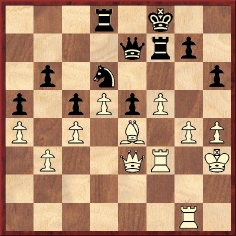
39 g5 hxg5 40 Rxg5 Ke8 41 Bc2 Kd7 42 Rg6 Rh8 43 Qg5 Rf6 44 Rxg7 Nf7 45 Qg4 Kd6 46 Rg6 Kc7 47 Rxf6 Qxf6 48 Rg3 Rh7 49 h5 Nh8 50 Qg5 Qf7 51 Kh4 Kb7 52 f6 Rxh5+ 53 Qxh5 Qxf6+ 54 Qg5 Qf2 55 Qg7+ Nf7 56 Qg4 Qf6+ 57 Kh3 Qf1+ 58 Kh2 Resigns.
For the sake of completeness, below is the full score of another game to which our correspondent Joost van Winsen referred in C.N. 4803:
Armando Acevedo – Ernesto Che Guevara
Camagüey, 29 May 1964
Ruy López
1 e4 e5 2 Nf3 Nc6 3 Bb5 a6 4 Bxc6 dxc6 5 O-O Bd6 6 d4 exd4 7 Qxd4 f6 8 Nc3 c5 9 Qe3 Nh6 10 e5 Ng4 11 Qe4 Nxe5 12 Nxe5 Bxe5 13 Be3 Qe7 14 Nd5 Bxh2+ 15 Kxh2 Qxe4 16 Nxc7+ Kf7 17 Nxa8 b6 18 Nxb6 Bb7 19 White resigns.
Our Dutch correspondent also draws attention to a webpage offering several chess photographs of Che Guevara.
C.N. 4806 asked for details about a New York Times report on archaeological discoveries referred to by Capablanca in Last Lectures, and the full item has now been supplied by Gene Gnandt (Houston, TX, USA), from page 17 of the newspaper’s 14 March 1938 edition:
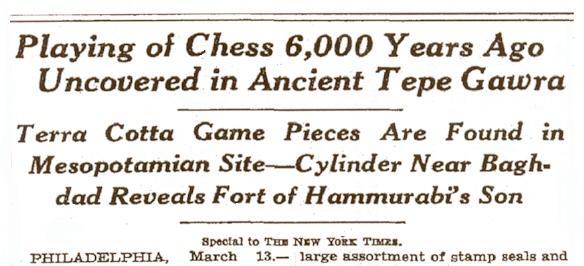
The report was based on ‘evidence announced today by the University of Pennsylvania Museum and the American School of Oriental Research in Baghdad’. It stated that ‘on the 14th level of the site of the ancient Tepe Gawra, in Northern Iraq, members of a joint expedition of the two institutions have found a collection of small terra cotta gaming pieces which, they said, were shaped like human figures and resembled closely some of the chessmen used in various stages of the game’s development’.
A little more from the newspaper’s report is quoted below:
‘Dr E.A. Speiser, director of the Baghdad school and Professor of Semitics at the University of Pennsylvania, who found the Tepe Gawra site in 1927, said that these finds offered the first indication that chess, or its prototype, was a diversion of the prehistoric Mesopotamians of about 4000 B.C.
... The gaming pieces discovered by the present expedition show evidence of considerable use. The level on which they were picked up belongs to the El-Obeid period of the earliest known settlements in Southern Mesopotamia.
This season’s expedition, led by Charles Bache, assisted by John J. Tobler, has had to do with the Samarra and Obeid painted pottery periods.’
We trod gingerly in C.N. 4800 regarding the record for simultaneous chess, and a cautious addition below concerns the largest simultaneous blindfold display whose circumstances are not disputed.
M. Najdorf played 45 games blindfold and simultaneously at the Prestes Maia Gallery, São Paulo, Brazil on 24-25 January 1947. He scored +39 –2 =4 in approximately 23 hours. A report and all 45 game-scores were given on pages 169-179 of Miguel Najdorf El hijo de Caissa by Nicolás Capeika Calvo (Buenos Aires, 2002).
Our Chess Records article includes an entry for the oldest chess club, the Schachgesellschaft Zürich (founded in 1809 and still in existence today). Wanted now: suggestions for the first-ever chess club.
It will be remarkable if many (or, indeed, any) readers can identify the chess master in this caricature:
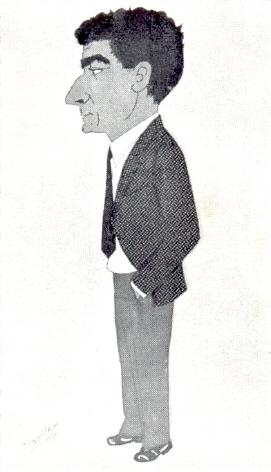
Ricardo Velasco (London) mentions a photograph of Capablanca and Alekhine taken in Buenos Aires in 1927 which has been widely disseminated on the Internet in the past year or so, billed as the only existing picture of both masters at the board during their world championship match.
However, another photograph was given on page 4 of the Argentinian newspaper Crítica of 9 March 1942. Since we have only a photocopy, the reproduction below is not of good quality:
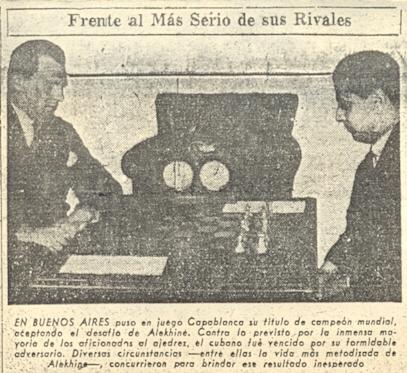
A photograph of Capablanca alone at the board appeared on page 3 of El Ajedrez Americano, October 1927:
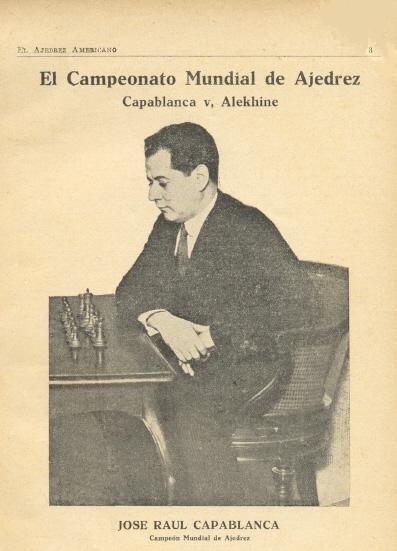
For Alekhine alone, we turn to La Prensa of 30 November 1927 (another photocopy):
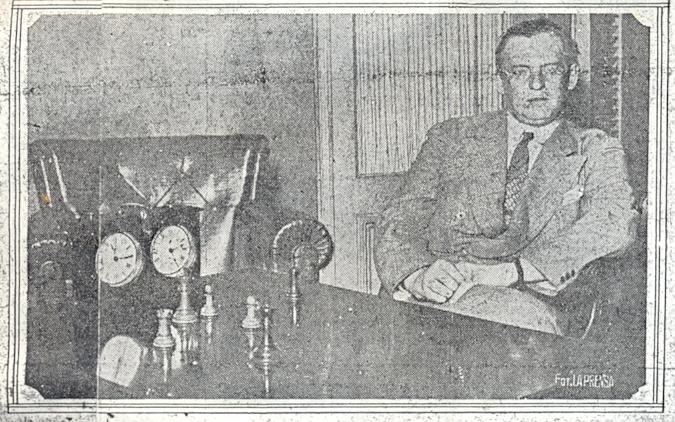
The newspaper’s caption read, ‘El profesor Alekhine junto al tablero donde se jugó la partida final del campeonato’.
As noted in C.N. 4586, a photograph of Capablanca and Alekhine standing together was published on page 2 of Crítica, 18 September 1927:
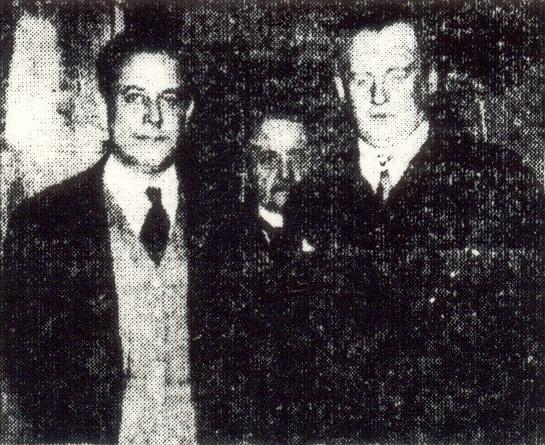
The previous day the Argentinian newspaper (page 3) had given the following picture by Bravo:
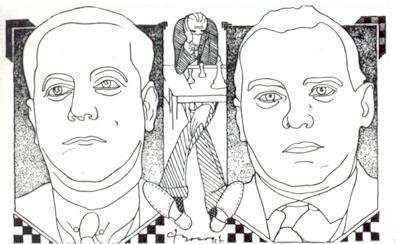
The caricatures of Capablanca and Alekhine below also come from Crítica (11 October 1927, page 4 and 24 September 1927, page 7 respectively):

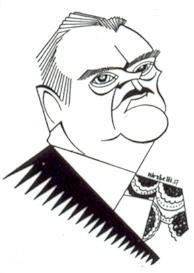
Christophe Bouton (Paris) asks what factual basis exists for the very high estimates (of even 100,000 or more) for the number of games played by J.H. Blackburne.
The matter was addressed on pages 11-12 of Mr Blackburne’s Games at Chess by P. Anderson Graham (London, 1899):
‘He calculates that since 1861 he has played no fewer than 50,000 games at chess, and I think the estimate is probably under rather than over the real figure. A brief calculation will show my reason for so believing. He goes off on his chief tour early in October and does not return till Christmas, beginning another early in January. During the autumn of 1898 – and it was no exceptional season – he played close on 1,100 games. [Anderson Graham then gave detailed figures for January 1889 and continued as below.]
In one week, therefore, he played 117 games in public, of which eight were blindfold.
Between 1 October and 25 December he, as a rule, has played from 1,000 to 1,100 games. January and February are equally busy, and during the succeeding months his engagements are irregular, so that it is a fair estimate that he has been in the habit of playing at least 2,000 games a year. If allowance be made for the few seasons during which illness or some other cause kept him at home, it will be seen that his estimate of the total cannot be very far out.’
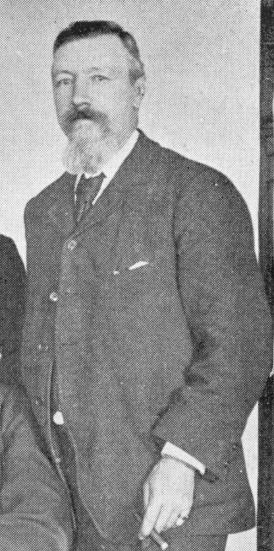
Joseph Henry Blackburne
As regards the atmosphere of Blackburne’s displays, the following comes from page 286 of the July 1899 BCM:
‘Some simultaneous players pace from board to board as if engaged in a matter of life and death importance, and with a very serious – not to say sombre – funeral appearance. Not so Blackburne, for he contrives to make it a merry performance. He bubbles over with humour, he has flashes of fancy and plays off wit. He annotates each move as he goes along, and the annotations are calculated to make even the losing player laugh and be on good terms with himself. The player loses his game but does not lose his self respect; and this is important at chess. Blackburne has a delicate way of dealing with his opponents in simultaneous performances, and is not without a warm corner of estimation even for the despised “wood-shifter”.’
This is the earliest use of the term ‘wood-shifter’ that we have found so far. See pages 119-120 of Chess Facts and Fables and C.N. 4325.
Rod Edwards (Victoria, BC, Canada) notes on an Italian webpage a reference to a mid-nineteenth century match (20 games) between Berthold Suhle and Bartolomeo Forlico and asks for further information.
We have few details on hand, but can quote the following from page 191 of that excellent book Storia degli Scacchi in Italia by Adriano Chicco and Antonio Rosino (Venice, 1990):
‘Mentre a Modena si mettevano in luce questi forti giocatori, a Venezia primeggiava Bartolomeo Forlico, del quale si ricorda una lunga sfida contro Berthold Suhle su venti partite, terminata a favore del tedesco con due sole partite di vantaggio. Una di queste partite fu pubblicata dalla Deutsche Schachzeitung del 1859. Forlico si trasferì poi a Roma, dove partecipò con buon successo al torneo del 1886.’
The match was mentioned, without details, on page 26 of the January 1859 Deutsche Schachzeitung, and page 111 of the April 1859 issue gave this game:
Berthold Suhle – Bartolomeo Forlico1 e4 e5 2 f4 d5 3 exd5 e4 4 Bb5+ c6 5 dxc6 bxc6 6 Bc4 Bc5 7 Bxf7+ Kf8 8 Bxg8 Kxg8 9 Qe2 Qe7 10 Nc3 Bf5 11 b3 Nd7 12 Bb2 Nf6 13 h3 Nd5 14 Nxd5 Qh4+ 15 Kd1 cxd5 16 Qb5 Qh5+
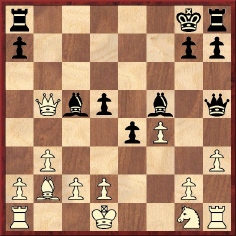
17 g4 Bxg4+ 18 hxg4 Qxh1 19 Qxc5 Rd8 20 Qxa7 Qh6 21 Qe7 Ra8 22 Qd7 and White won.
From page 15 of the January 1934 American Chess Bulletin:
‘Having returned home during the Christmas holidays, José R. Capablanca is still in Havana, where, happily, political conditions are returning to normal. Before leaving New York he visited the Marshall Chess Club and, quite informally, took part in one of its weekly rapid transit tournaments. Winning nine games straight, the famous Cuban carried off the first prize. Reuben Fine, club champion who has to his credit a long series of victories in these weekly bouts, scored 7-2 and divided the second, third and fourth prizes with Milton Hanauer and Samuel Reshevsky.’
Gene Gnandt (Houston, TX, USA) sends us the more detailed report on page 31 of the New York Times, 7 December 1933:
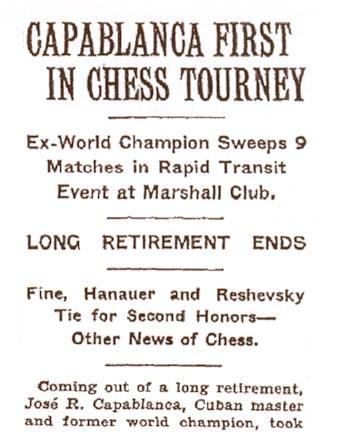
The newspaper gave the complete final standings of the tournament (played on 6 December 1933) as follows: Capablanca 9-0; Fine 7-2, Hanauer 7-2 and Reshevsky 7-2; Chernev 4-5; Hamermesh 4-5; Dunst 2-7, Hammer 2-7 and Simon 2-7; Sack 1-8.

Suggestions from correspondents included M. Adams, L. Fressinet, A. Matanović, B. Parma and T. Petrosian. Understandably, no reader gave the correct answer, which was J. Penrose. The caricature appeared in the Palma de Mallorca, 1969 tournament book, which also presented, on page 4, a group photograph:
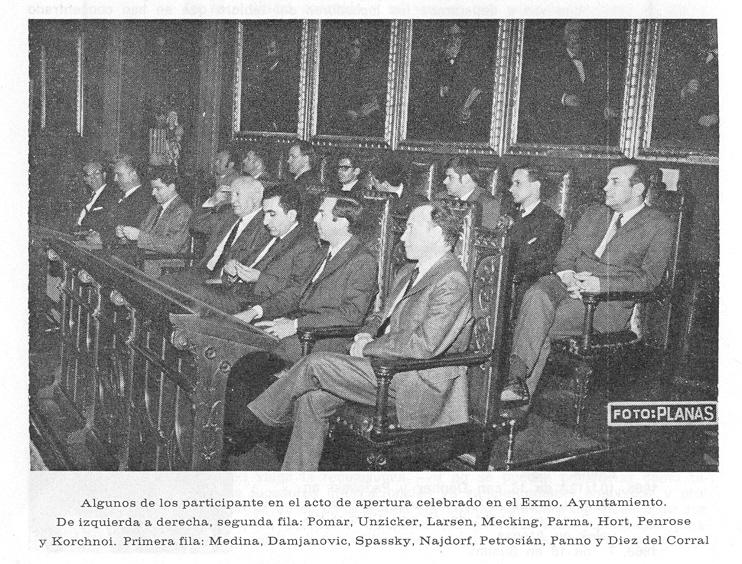
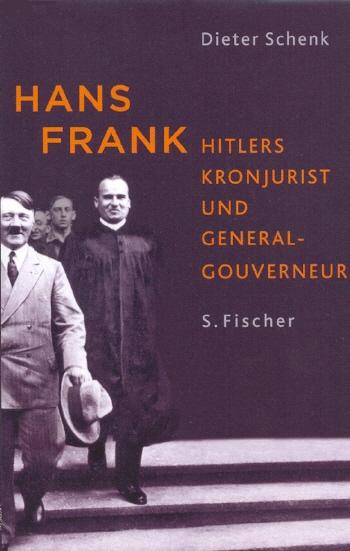
Edward Hamelrath (Memphis, TN, USA) draws attention to a new book, Hans Frank (subtitle: Hitlers Kronjurist und Generalgouverneur) by Dieter Schenk (Frankfurt am Main, 2006) and quotes a reference to chess on page 177 (given below in our translation):
‘Frank was extremely interested in chess. He not only possessed an extensive library of chess literature but was also a good player, and he even “received” the Ukrainian chess master Bogoljubow at the castle. On 3 November 1940 he organized a chess congress in Cracow. Six months later he announced the setting-up of a chess school under Bogoljubow and the chess master Dr Alexander Alexandrovich Alekhine, and he visited a chess tournament in October 1942 at the “Literary Café” in Cracow.
Goebbels truly exploded when he heard of Frank’s activities:
“Frank is pursuing a policy which is anything but that sanctioned by the Reich. I have been shown letters in which he orders the setting-up of a chess seminar in Cracow under Polish management. That is evidently now very important when it comes to providing the necessary basic foodstuffs for the Reich and to putting together the organization that this requires. Frank sometimes gives the impression of being half mad. Some of the incidents that have been reported to me concerning his work are simply dreadful.”’
The Goebbels quote comes from his diary, and in an endnote on page 443 of the book the exact source is specified as ‘Goebbels Tagebuch, Teil II, Band 5, 21.8.1942’.
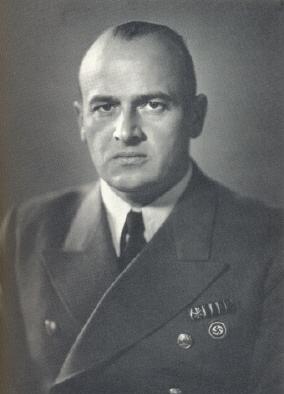
Hans Frank (official Nazi photograph circa 1938)
C.N. 3527 described Hans Frank as ‘the most prominent Nazi leader to be strongly interested in chess’. Another official who was keen on the game was the Gauleiter Hans Schemm, and both he and Frank were mentioned in a report about the 1934 world championship match on page 162 of the June 1934 Deutsche Schachzeitung:
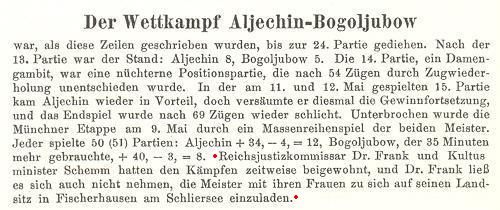
On page 5 of his book on the match, Schachkampf um die Weltmeisterschaft (Karlsruhe, 1935), Bogoljubow paid tribute to both Frank and Schemm for supporting the contest:
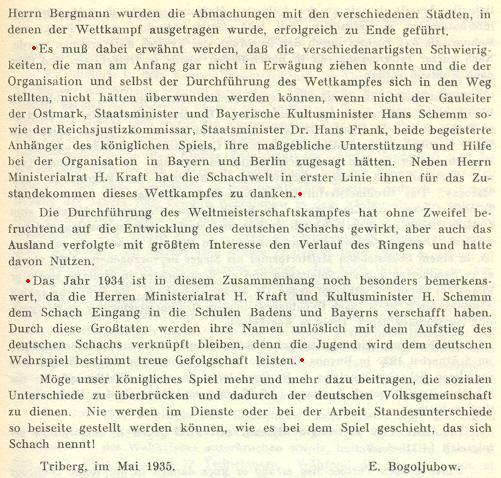
Already when Bogoljubow’s words were written, Schemm was dead, having been killed at the age of 43 in an aeroplane crash on 5 March 1935 (Deutsche Schachzeitung, March 1935, page 71). News of his death took up the entire front page of the Deutsche Schachblätter, 15 March 1935, and he was featured again in the 1 February 1938 issue:
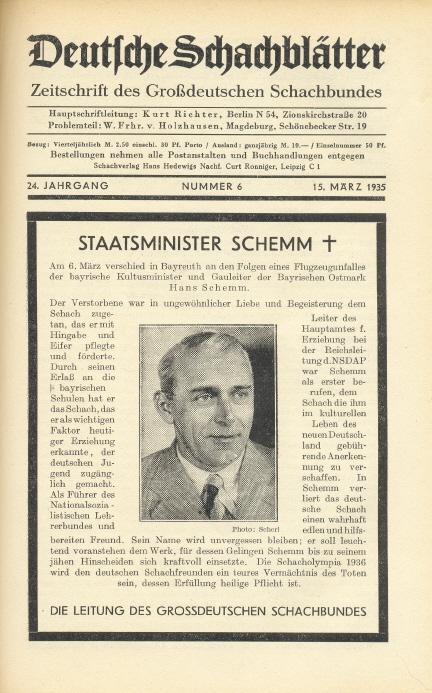
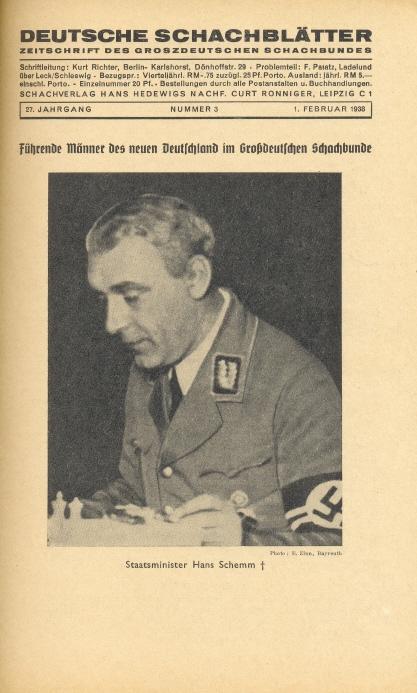
Bogoljubow’s book Schach-Schule was first published in 1935, but we also have the 1940 edition. The latter was dedicated to Schemm and had a page consisting solely of a picture of him with his signature:
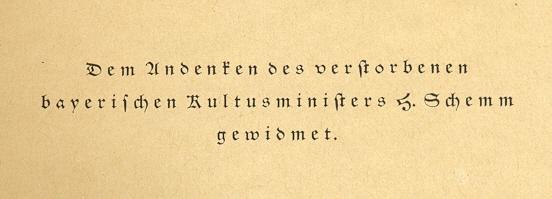
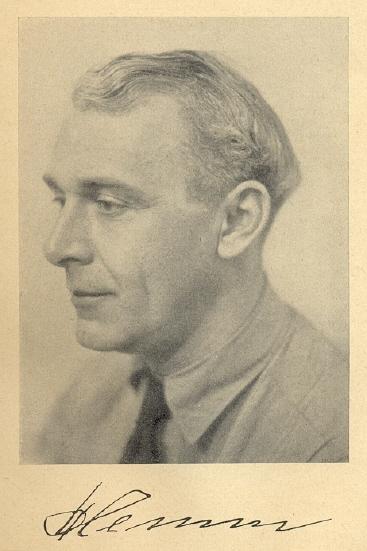
Hans Schemm
A number of C.N. items have discussed, desultorily, the subject of Bogoljubow and the Nazis. For instance, Reuben Fine’s unsubstantiated claim that Bogoljubow had some of his rivals put in concentration camps by the Nazis was dealt with on pages 183-184 of Chess Explorations and pages 191-192 of Chess Facts and Fables, whereas page 92 of the latter book referred to Bogoljubow’s attempts at rehabilitation vis-à-vis FIDE in 1946. Has any chess writer ever published a rigorous, extensive study of Bogoljubow’s conduct during the Third Reich?
Below are three photographs from Deutsche Schachblätter:
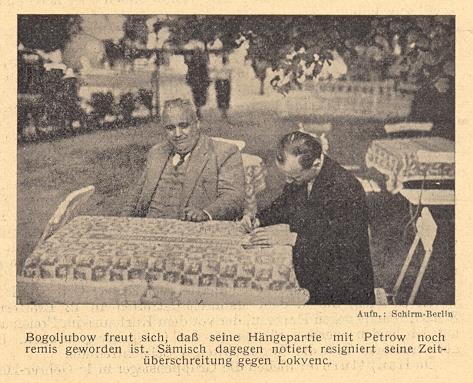
Bad Harzburg, 1938 (15 July 1938
issue, page 215)

Cracow/Krynica/Warsaw, 1940 (1
December 1940 issue, page 192). Ludwig Fischer was hanged for
war crimes in 1947.
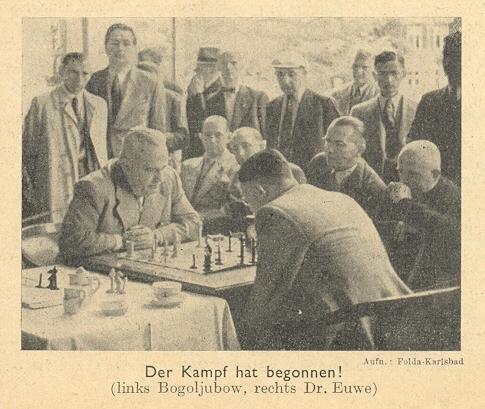
Bogoljubow v Euwe match, Carlsbad,
1941 (1 August 1941 issue, page 113)
Alan O’Brien (Mitcham, England) draws attention to two crosswords with a chess theme:
In both puzzles the clues are cryptic, in the British tradition for crosswords. To give just one (straightforward) example, the answer to the clue ‘Fireside game’ is ‘Poker’.
Page 268 of Kings, Commoners and Knaves quoted a description of Nimzowitsch as ‘one of the great masters of nineteenth-century chess’ (David Spanier) and a reference to ‘the nineteenth-century master Siegbert Tarrasch’ (Cathy Forbes). Now we add the following from page 6 of Make Your Own Chess Set by David Carroll (Englewood Cliffs, 1974):
‘Gradually the modern game emerged and developed. By the nineteenth century, masters like Morphy, Capablanca and Lasker were giving chess a heritage and were helped by the efforts of such men as Alexander Alekhine ...’
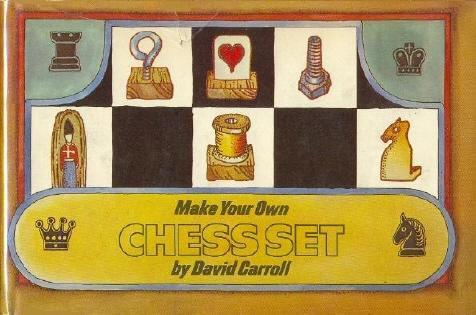
The book by David Carroll which was quoted in C.N. 4823 is a 151-page guide offering ‘instructions for making 25 unique chess sets out of a myriad of inexpensive and easy-to-find materials’, such as plumbing parts, hose fixtures, playing cards, aluminum/aluminium foil, gumdrops and cornstarch.
More recent monographs are the US book Wooden Chess Sets You Can Make by Diana Thompson (East Petersburg, 2003) and the Australian publication Turned Chessmen by Mike Darlow (Exeter, 2004).

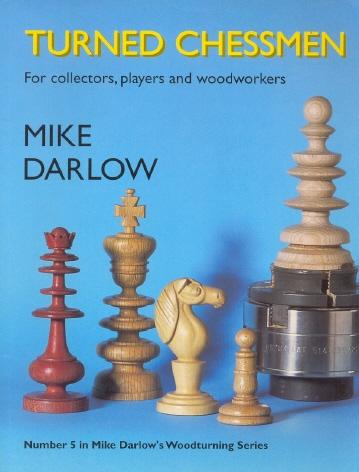
Pages 26-31 of Chess by Paul Langfield (London, 1978) explained how to make a chess set and board. To mention, also at random, one magazine article, pages 21-22 of Mechanics, March 1957 had instructions by Eric Hawkesworth on making a chess set (‘easier than you think’) from brass, duralumin and dowel.
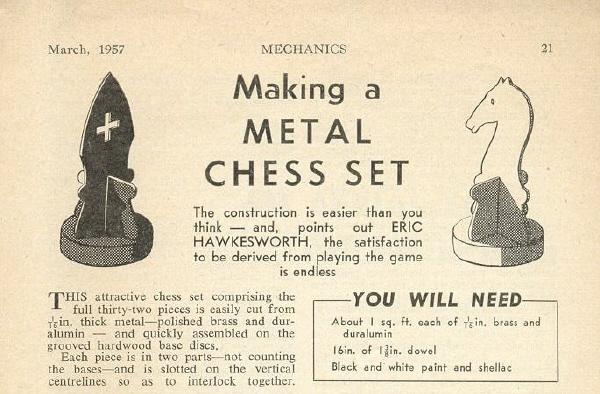

Black to move
Play went 18...Nc4 19 Nb3 Qxe4 20 dxe4 Rd1+ 21 Qxd1
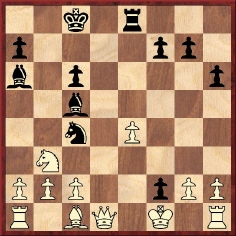
21...Nd2 mate.
The full score was given in C.N. 2082 (see page 213 of Kings, Commoners and Knaves), taken from page 108 of the Brooklyn Chess Chronicle, 15 April 1885. The magazine merely headed the game ‘Played in Bradford, England, between Messrs Knapton and Gunsberg’, and as the date we therefore put ‘1885 (?)’.
Now, Marc Hébert (Charny, Canada) reports that page 4 of the (Quebec) Morning Chronicle, 8 January 1885 gave the game-score with the heading ‘Played at the Exchange Café, Market Street, Bradford ... Notes by Mr I. Gunsberg, from the Bradford Observer’. This indicates that the game was played no later than 1884, and we shall be grateful if a reader can trace the original publication in the Bradford newspaper.
Alan O’Brien (Mitcham, England) draws attention to this position from L. Kavalek v L. Polugayevsky, Havana Olympiad, 1966:
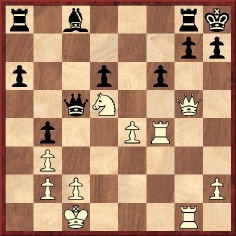
The continuation was 26 Qg6 Qf2, and our correspondent points out that on page 160 of his book The Sicilian Labyrinth, volume 1 (Oxford, 1991) Polugayevsky wrote:
‘A very rare instance from a practical game where both queens simultaneously sacrifice themselves. Had there been a prize not for the most brilliant game, but for the most brilliant move, this “dying” duet of the queens would have had every chance of winning it ...’
The game was eventually drawn.
We recall only one other such occurrence, in the 1917 correspondence game between A. Rhode and W. Schlage given on pages 62-63 of A Chess Omnibus:
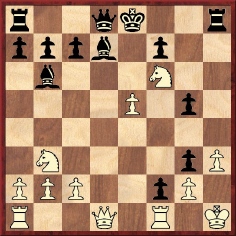
Play went 21...Qxf6 22 Qxd7+, and Schlage commented: ‘The only move. These successive queen sacrifices, which are also the first moves by both queens, are most likely unique in chess literature.’ White resigned at move 29.
Below are some other instances of unusual queen offers, starting
with a game (R. Swiderski v H. Caro, Barmen, 1905) in which both
players gave up their queens, although not ‘simultaneously’ or
‘successively’. It was given on pages 44-45 of Chess
Explorations:
1 c4 e5 2 Nc3 Nf6 3 g3 Bc5 4 Bg2 O-O 5 e3 Nc6 6 Nge2 Re8 7 O-O e4 8 Qc2 Qe7 9 Nf4 Nb4 10 Qb1 c6 11 a3 Na6 12 d4 exd3 13 Qxd3 d6 14 b4 Bb6 15 Bb2 Ng4 16 Ne4 Ne5 17 Qc3 f6 18 Rad1 Bc7 19 h3 Bf5 20 g4 Nxg4 21 Ng3 Nh6 22 Kh1 Rad8 23 Rg1 Bg6 24 Nxg6 hxg6 25 Be4 Qe6 26 Rg2 Qxh3+ 27 Rh2 Qg4 28 f3 Qxg3 29 Rg1

29...Qxh2+ 30 Kxh2 d5+ 31 f4 Rxe4 32 cxd5 Kh7 33 dxc6 Nf5 34 Bc1 Rde8 35 b5 Nxe3 36 Rh1 Bxf4+ 37 Kg1+ Bh6 38 bxa6 Rg4+ 39 Kf2 Rf4+ 40 Kg3 Nf5+ 41 Kg2 Re2+ 42 Kg1 Rg4+ 43 Kf1 Ng3+
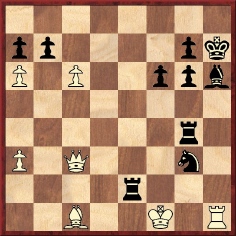
44 Qxg3 Rxg3 45 axb7 Rgg2 46 Rxh6+ gxh6 47 b8Q Rgf2+ 48 Kg1 Rf5 49 Qxa7+ Kg8 50 Bxh6 Re1+ 51 Kg2 Re2+ 52 Kg3 Resigns.
Two consecutive queen sacrifices (by promotion) occurred in K. Gilg v K. Lamprecht, Karbitz, 1924 (see pages 11-12 of Kings, Commoners and Knaves):
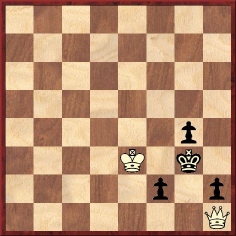
Black played 68...f1(Q) 69 Qxf1 h1(Q) 70 Qxh1 Stalemate.
The next position arose in the game C.W. v Kostrovitsky, St Petersburg, 1893 (?), as given on pages 15-16 of A Chess Omnibus:
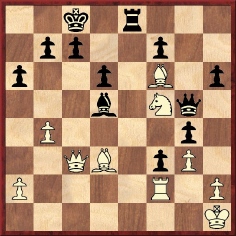
Black offered his queen on three consecutive moves: 1...Qxf6 2 Qc1 Qb2 3 Qf1 Qxf2 4 Qxf2 Re1+ 5 Qxe1 f2+ and mate in two.
A game in which ‘White sacrifices both queens within three moves and wins’ appeared on page 105 of Mastering Tactical Ideas by Nikolay Minev (Seattle, 2000), headed ‘Keller – Jaser, corre. 1976/78’:
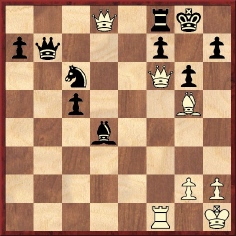
1 Q8xd4 Nxd4 2 Bh6 Ne6 3 Qxe6 and wins.
The final position comes from a 2002-2003 league match in London between L. Trent and D. Tan:
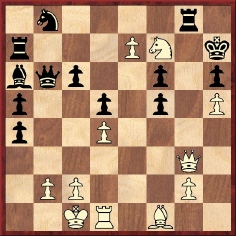
The last move of the game was 27 e8(Q), and on page 21 of issue 37 of Kingpin Jonathan Rogers wrote:
‘A novel situation, as far as I know. Has anyone before seen a serious game where one side has two queens, both en prise and unprotected even, to the same enemy piece, with each queen being able to deliver mate in one upon the capture of the other?’
From the chess section on page 18 of The Boardgame Book by R.C. Bell (Los Angeles, 1979):
‘[Staunton] designed a board in 1843 which has since become the standard European board.’
Various C.N. items (see the Factfinder) have referred to chess authors (G. Abrahams, A. Chéron and J.C.H. Macbeth) who wrote books on bridge too. C.N. 3280 (see page 131 of Chess Facts and Fables) noted that ‘Emanuel Lasker wrote extensively on bridge in his late-1920s books Encyclopedia of Games and Das verständige Kartenspiel’, but we did not mention that he also brought out a 65-page monograph on the game, Das Bridgespiel (Berlin, 1931).
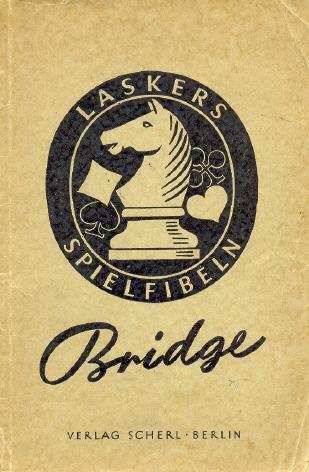
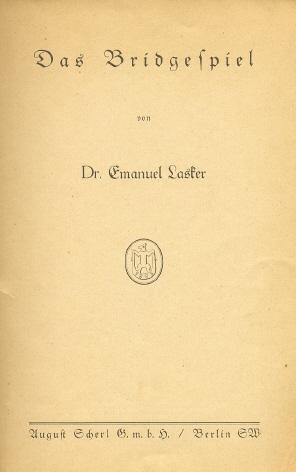

The writer above claimed to have started the world’s first daily chess column. Who was he?
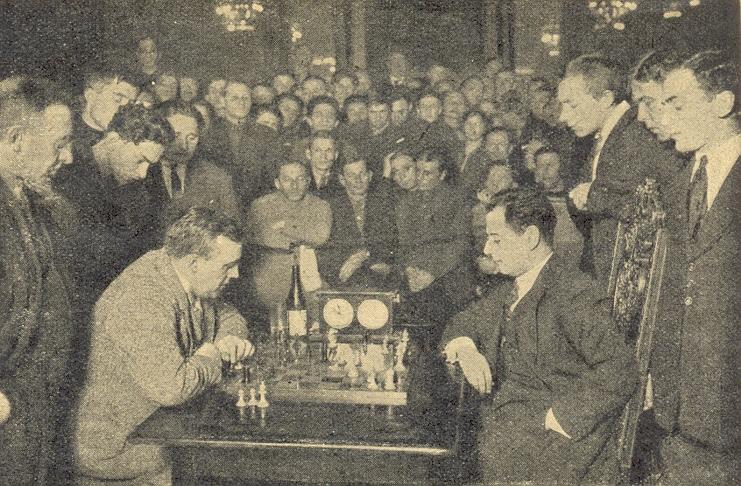
Leonard Barden (London) writes regarding our feature article Analytical Disaccord and, in particular, the accompanying photograph (Capablanca v Bogoljubow, Moscow, 1925):
‘As there are no score-sheets and the players are not bothered by the public crowding around them, I imagine that the photograph is from the post mortem. It seems that the black queen is on e5, with white knights on c3 and h5. The central area around Black’s three rear ranks is particularly hard to make out, but it is possible that his king is on f7, with his knights on d7 and f6. If that is so, it would appear that the players were analysing the ...Qe5 alternative at Black’s 12th move but with, after 13 Nxg7+ Kf7, 14 Nh5 at once, rather than the more forcing and not hard to find 14 Rf5. That is odd, as it could imply that Capablanca had not seen the Rf5-f4 tempo-gaining trick during the game.’
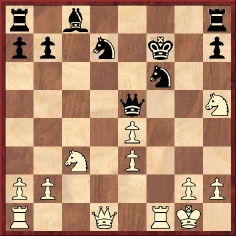
Variation after 12...Qe5 13 Nxg7+ Kf7 14 Nh5
Below is a close-up of the board:
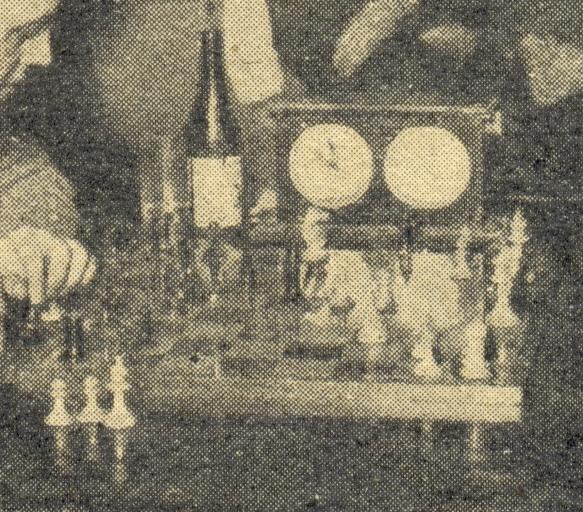
We gleaned the photograph from page 41 of Tartakower’s Shakhmatnaya pravda (Leningrad, 1926).
| First column | << previous | Archives [30] | next >> | Current column |
Copyright 2007 Edward Winter. All rights reserved.